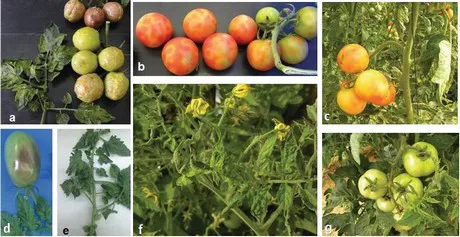Tomato brown rugose fruit virus (ToBRFV) was first detected in Israel in 2014. Since then it has been detected in several areas, including Europe, the Middle East and North America (Mexico and the United States). ToBRFV has the potential to significantly affect crop production and the marketability of tomatoes. The virus is not a food safety risk.
Hosts
This virus mainly affects tomatoes and peppers. Some weed species, such as black nightshade, have been shown to be carriers of the virus.
Spread
The virus is easily transmitted from plant to plant through contact with contaminated tools, equipment, workers and visitors, soil, and infected plants and seeds. This virus is easily spread in greenhouses when plants are thinned, transplanted, pruned or trellised. A recent study shows that bumblebees may also transmit the virus.
To date, outbreaks of the virus have predominately been reported on greenhouse tomatoes. Extensive outdoor establishment of this virus has not been reported.

Figure 1: Tomato plants infected with tomato brown rugose fruit virus. (a, d) Brown rugose symptoms developed on fruit. (b, c) Chlorotic spots on fruit. (a, e-g) Mosaic pattern developed on leaves and narrowing accompanied by mottling leaves. (g) Necrotic symptoms on pedicle (stem), calyces and petioles. (Source: Dombrovsky and Smith 2017 [CC BY 3.0]).
Symptoms
The leaves of infected plants are mildly to severely discoloured, with dark green bulges and narrowing (Figure 1: a, e-g). The affected fruit show crinkled brown or yellow spots (Figure 1: a-d). These fruit symptoms significantly reduce the market value or make the fruit non‐marketable.
What to do
Strict biosecurity measures are required to limit the introduction and spread of this virus in greenhouses. Growers should ensure they are using seeds and seedlings from trusted sources.
If you think you have found tomato brown rugose fruit virus, contact your local CFIA office.
Source: Canadian Food Inspection Agency
